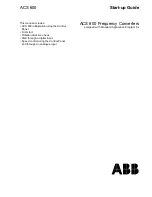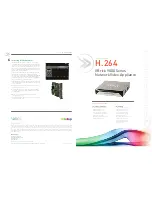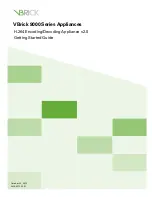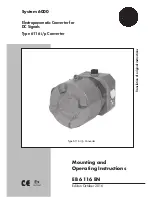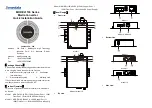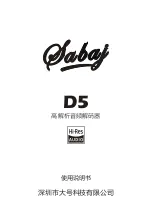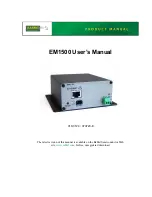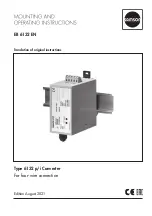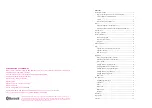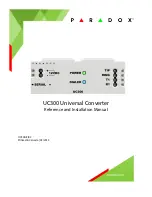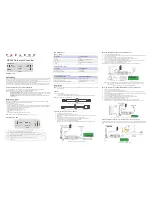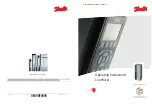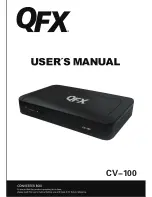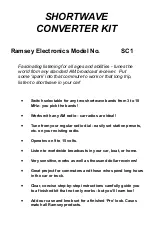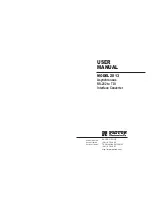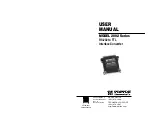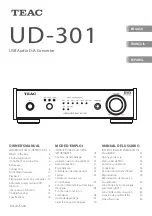
29
30
LOS
The Loss of Sync LED lights when the unit
loses synchronization with the incoming sig-
nal. This may happen when there is a fram-
ing mismatch or a loss of signal. In
unframed mode, the LOS LED monitors the
status of the transmit clock.
ALM
The alarm LED indicates the presence of a
AIS or RAI, or Out of Frame condition. The
ALM LED will blink on every half-second.
Alarms may occur due to:
• Loss of Synchronization
• Loss of Frame
• AIS (Blue Alarm)
• RAI (Yellow Alarm)
ERR
The error LED indicates various error condi-
tions, including framing bit errors, excessive
zeros, controlled slips, severe errors, or bit
errors (when sending V.52 test patterns).
When sending a test pattern, the LED will
remain lit if the unit does not receive the
identical pattern. When it receives the cor-
rect pattern, the LED will turn off. If error
insertion is on, the LED will blink once a
second if everything is operating properly.
TST
The test indicator LED blinks with a specific
pattern depending on the type of test mode.
When the unit is in local analog loop, the
LED will blink on briefly. When the unit is in
remote loop, the TST LED will blink off
briefly. When the unit is sending a test pat-
tern or is putting the remote unit into V.54
loopback, the TST LED will stay on. These
are the test modes:
• V.54 Loopback & V.52 Patterns
PWR
The power indicator LED will remain lit while
the unit is powered. It turns off when the
unit is not powered.
5.2 LOOP (V.54 & TELCO) DIAGNOSTICS
The Model 2094 offers three V.54 loop diagnostics. Use these
diagnostics to test the NTU and any communication links. These tests
can be activated via the software control port (See Section 3.2.3
System Diagnostics) or via signals on the serial port interface.
5.2.1 Operating Local Loopback (LL)
The Local Loopback (LL) test checks the operation of the local
Model 2094, and is performed separately on each unit. Any data sent
to the local Model 2094 in this test mode will be echoed (returned)
back to the user device (i.e., characters typed on the keyboard of a ter-
minal will appear on the terminal screen).
To perform a LL test, follow these steps:
1.
Activate LL. This may be done in one of two ways:
a. Enter Local Loop from the System
Diagnostics/Statistics menu and toggle the <Spacebar>
until “LL” appears next to the
Local Loop option.
b. Activate the “LL” signal on the DTE. If you are not sure
which lead is the “LL” signal, please refer to Appendix D.
2.
Verify that the data terminal equipment is operating properly
and can be used for a test.
3. Perform a V.52 BER (bit error rate) test as described in
Section 5.3.3. If the BER test equipment indicates no faults,
but the data terminal indicates a fault, follow the manufactur-
er’s checkout procedures for the data terminal. Also, check
the interface cable between the terminal and the Model 2094.
5.2.2 Operating Remote Digital Loopback (RDL)
The Remote Digital Loopback (RDL) test checks the performance
of both the local and remote Model 2094, as well as the communica-
tion link between them. Any characters sent to the remote Model 2094
in this test mode will be returned back to the originating device (i.e,
characters typed on the keyboard of the local terminal will appear on
the local terminal screen after having been passed to the remote
Model 2094 and looped back).
a
a




















